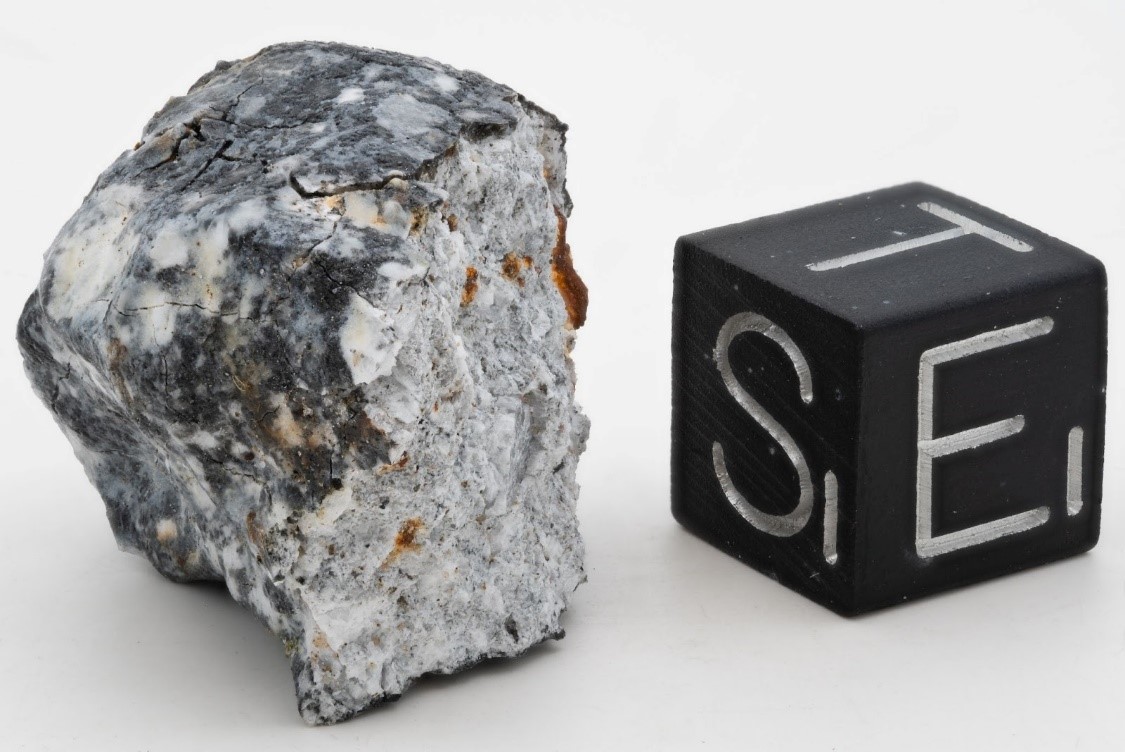The Spectral Characterization of the Ribbeck Aubrite as Mercury Analog: The Effect of Heating in Preparation for MERTIS FlyBy 5.
- 1DLR German Aerospace Center, Planetary Laboratories, Germany (aurelie.vandenneucker@dlr.de)
- 2Museum für Naturkunde, Berlin, Germany
- 3NASA Ames Research Center, California, USA
- 4Institut für Planetologie, Universität Münster, Münster, Germany
Introduction
The MErcury Radiometer and Thermal Infrared Spectrometer (MERTIS) of the BepiColombo mission has as main goal to characterize the Hermean surface mineralogy by measuring the spectral emissivity of Mercury’s surface with a spatial resolution of at least 500 mpp [1]. During the 5th Mercury FlyBy of BepiColombo on the 2nd of December 2024, MERTIS will operate and perform surface measurements on a large area of Mercury. To prepare for the upcoming remote sensing measurements of MERTIS, analogue materials to simulate the expected mineralogy within our observed region need to be selected and studied in laboratory. The recently fallen Aubrite meteorite “Ribbeck” was chosen as analogue material, as this enstatite-rich material is highly reduced such as expected for the planet [2]. Microscopical XRF measurements and reflectance bulk spectra were acquired before and after heating Ribbeck at Mercury temperatures (up to 450 °C) to see the effect of heating on this material. These results will be used as a baseline for understanding the lab and remote sensing emissivity spectra once the BepiColombo spacecraft reaches Mercury and MERTIS can operate.
Materials and Methodology
For this study Aubrite samples of the recent January 21st 2024 meteorite fall "Ribbeck", from the impact of asteroid 2024 BX1, were selected for microscopical and spectral analysis at our laboratory facilities of the German Aerospace Center (DLR) and the Museum für Naturkunde (MfN) in Berlin. Measurements were performed on a 4.7 g hand specimen and a crushed down Ribbeck sample composed of grains smaller than 2mm.
The hand specimen reveals a freshly exposed face besides its fusion crust and was analyzed with non-destructive laboratory techniques (Fig.1). For the microscopical analysis, an optical polarized microscope and a scanning electron microscope (SEM/EDS) JEOL JSM-6610LV were used for the general mineralogical characterization of the sample. Spectral analyses consisted in point-localized IR reflectance measurements and bulk IR hemispherical reflectance measurements of the exposed face and fusion crust to assess the absorbance features and derive the general mineralogy of the sample. The point-localized reflectance measurements (NA = 0.4, FoV = 50 µm) consisted of 1000 scans at an optical magnification of 15x and a resolution of 4cm-1. They were acquired with the Hyperspectral Bruker Hyperion 2000 Micro-FTIR in the VNIR (0.7 – 2 µm) and MIR (1 – 20 µm) spectral range. Bulk hemispherical reflectance measurements (aperture = 4 mm) were acquired with the Bruker FTIR VERTEX 80V spectrometer in the VIS (0.4 – 1 µm), VNIR (0.7 – 2 µm) and MIR (1 – 20 µm) spectral range. All hemispherical measurements consisted of 1000 with a spectral resolution of 4 cm-1 .
The crushed material was heated up step-wise until 450 degrees Celsius under low vacuum conditions within the high T emissivity chamber of the Planetary Spectroscopy Laboratory (PSL) at DLR. Bulk hemispherical reflectance measurements (aperture = 4 mm) were acquired with the Bruker FTIR VERTEX 80V spectrometer in the UV (0.2 – 0.4 µm), VIS (0.4 – 1 µm), VNIR (0.7 – 2 µm) and MIR (1 – 20 µm) spectral range before and after heating the sample. All hemispherical measurements consisted of 1000 with a spectral resolution of 4 cm-1. µXRF geochemical maps of the Ribbeck material before and after heating were acquired with an X-ray fluorescence spectrometer Bruker M4 S8 Tornado Plus.
Results and Discussion
Point-localized and bulk IR reflectance measurements on the Ribbeck hand-specimen showed distinct absorption features around 2.7 and 5 µm and emission bands between 8-13 µm. The data revealed that the absorption bands in the MIR are highly attenuated in the fusion crust compared to the freshly exposed interior, including the strong reduction of the OH-band. Most spectral features are a good match to those expected in an Aubrite, such as the identification of enstatite and sulfides (including oldhamite, CaS) within our analyzed sample [3]. The reduced mineralogy of nearly FeO-free primary minerals (e.g. enstatite), and abundance in exotic sulfides (e.g. alabandite) characteristic of the Ribbeck aubrite meteorite, can be expected on other planetary bodies such as Mercury [2]. The XRF geochemical maps revealed that the heated sample shows an overall reduction in sulfides, suggesting that some wt% of S might be outgassed during the heating process.
The MERTIS instrument on the BepiColombo spacecraft, is designed to measure Mercury’s surface composition over a wavelength range of 7 - 14 µm [1]. Most of the absorption features of the meteorite Ribbeck fall into the MERTIS spectral range, including that the low iron content of Mercury will not be an issue for MERTIS to map the planet’s surface mineralogy. MERTIS will therefore help us to clarify the possible link between the composition and geochemistry of Mercury and the Aubrites.
References
[1] Hiesinger H. and Helbert J. (2010) Planetary and Space Science, Volume 58, 144-165. [2] Wilbur Z., et al. (2022) Meteoritics & Planetary Science, Volume 57. 1387-1420. [3] Keil, K. (2010). Enstatite achondrite meteorites (aubrites) and the histories of their asteroidal parent bodies. Geochemistry, 70(4), 295-317.

Fig.1: Ribbeck meteorite sample with exposed interior that was used for the non-destructive laboratory measurements.
How to cite: Van den Neucker, A., Helbert, J., Barraud, O., d'Amore, M., Verma, N., Adeli, S., Alemanno, G., Maturilli, A., Hamann, C., Hecht, L., Greshake, A., Kaufman, F., Luther, R., Jenniskens, P., and Hiesinger, H.: The Spectral Characterization of the Ribbeck Aubrite as Mercury Analog: The Effect of Heating in Preparation for MERTIS FlyBy 5., Europlanet Science Congress 2024, Berlin, Germany, 8–13 Sep 2024, EPSC2024-733, https://doi.org/10.5194/epsc2024-733, 2024.